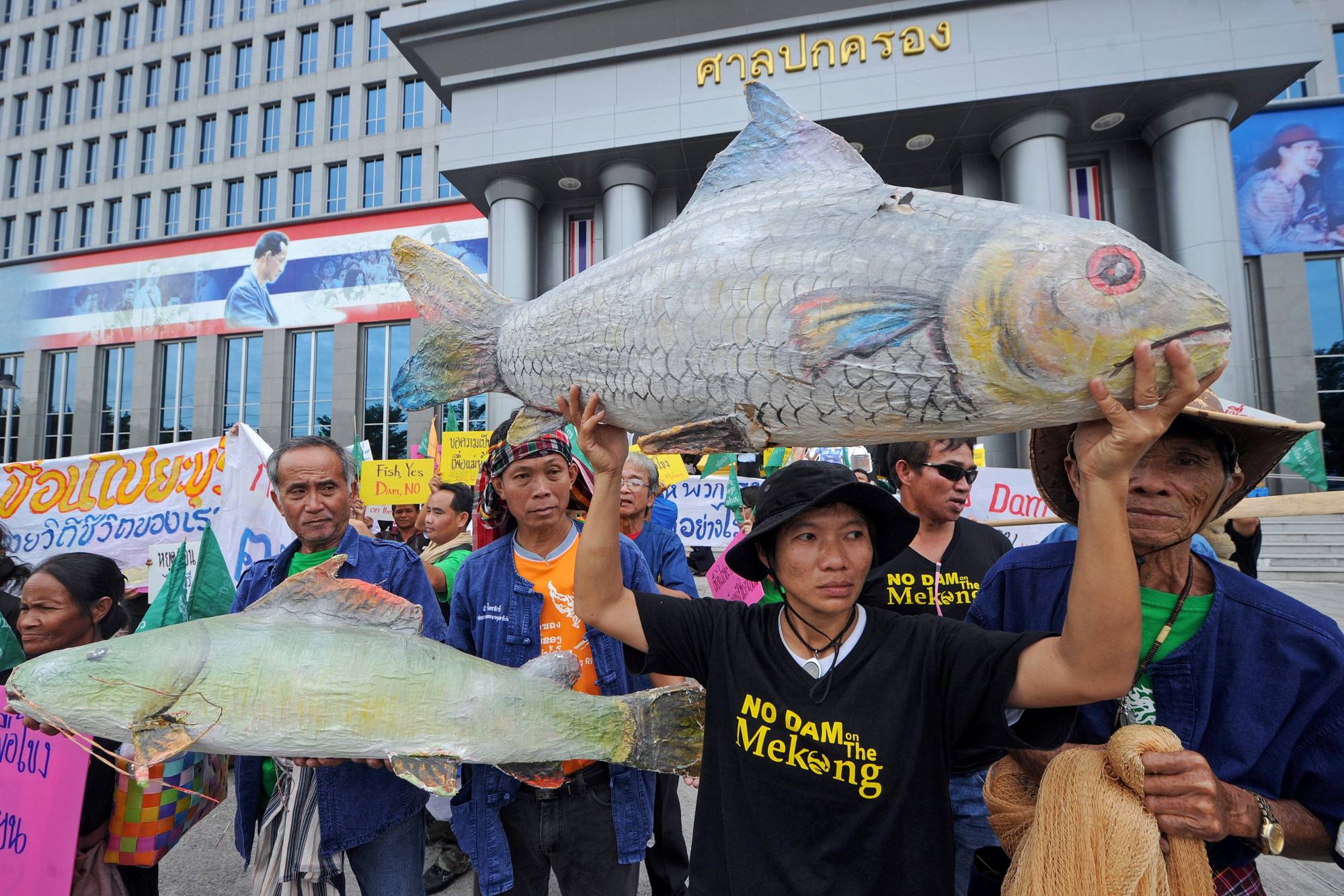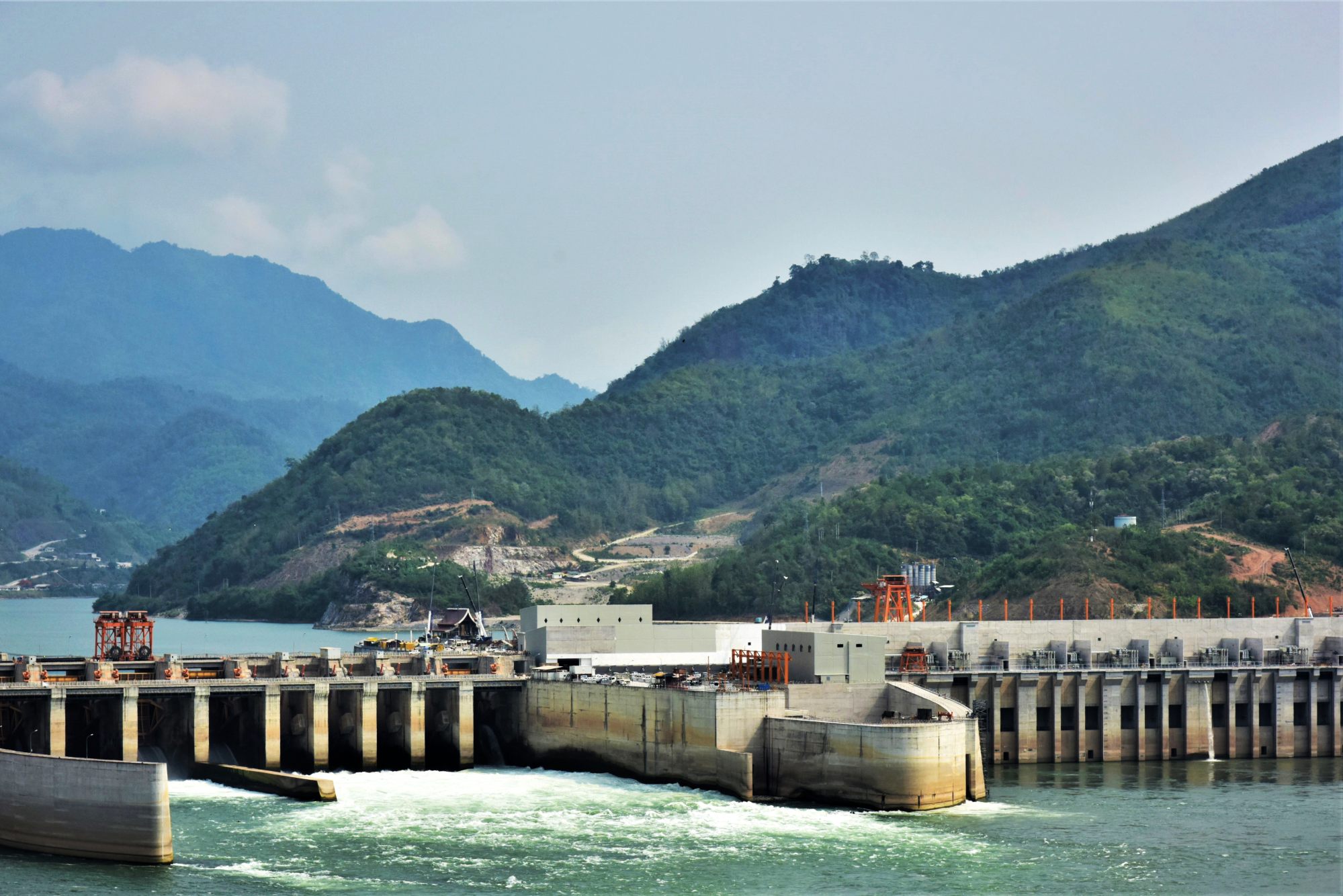The sharp decline in fisheries has largely been attributed by Mekong experts to 12 Chinese dams on the Lancang (the upper Mekong), and two dams downstream in Laos – the Thai-built Xayaburi dam and the Sinohydro construction on behalf of Malaysian developer of Don Sahong, which have drastically damaged the ecosystem.
Fishers in northeastern Thailand’s Mekong provinces, who live downstream from the Xayaburi dam in neighbouring Laos, say they have lost up to 70 per cent of their catch since the hydropower project began operations in October 2019.
The empty nets have devastated many riverine communities, depriving their children of essential nutrition and protein, as well as forcing fishers to seek other employment.

Six steps to save the river fish
WWF and its partners say governments, investors in dams and policy advisers must hammer out an agreement on saving the river species, suggesting six steps, including to protect free-flowing rivers, restore critical habits such as floodplains and to end the unsustainable management of resources, especially sand-mining.
Experts blame the fast-tracked change to the habitat of fish species, which have evolved in the river system over millennia, on the dams which cascade down the river system, starting with 12 Chinese dams operating on the upper Mekong and two more dams currently in operation downstream in Laos.
“Research has clearly shown hydropower dams have been the primary reason for the loss of free-flowing rivers,” Richard Friend, Associate Professor at the University of York in England, told This Week in Asia.
‘The biggest threat is hydropower’: 1 in 5 Mekong fish species face extinction
‘The biggest threat is hydropower’: 1 in 5 Mekong fish species face extinction
Hydropower projects break up the flow of the river, hampering the movement of the vital sediment which nourishes the river and surrounding areas, as well as trapping migratory fish species behind the walls of the dam, despite efforts by dam-builders to design breakthrough “fish-ladders” to allow them to pass.
Economic data from the Fisheries Department of the Mekong River Commission (MRC) shows annual fish catch of the four lower Mekong countries of Cambodia, Laos, Thailand and Vietnam, was valued at US$11 billion back in 2015. That slumped by US$3 billion within five years from the depletion of fish stocks.
While the MRC holds regular talks with dam developers, stakeholders from fishing communities and conservation groups are rarely invited to the table.
“It is significant that fishermen have been excluded, and the MRC has never consulted them,” said Friend, who was also a former consultant to the MRC. The fish emergency recovery blueprint also calls for inclusive planning, fully involving local expertise and fishing communities.
‘Transformative’: data-sharing for Southeast Asia’s longest river set to begin
‘Transformative’: data-sharing for Southeast Asia’s longest river set to begin
The Communist government of landlocked Laos, which has vowed to uplift the nation’s economy in part by becoming the “Battery of Asia”, is wedded to major hydropower plans to be developed by Thai, Chinese and South Korean companies.
But questions over the demand for the electricity produced are mounting.
Already Thailand is buying electricity from the Xayaburi dam in Laos, and will be the main customer for seven more scheduled dams in the pipeline that pose a huge obstacle to implementing any new plan for fisheries conservation
“Thailand has a massive oversupply of electricity, with a reserve margin of 45 per cent in 2023,” said Gary Lee, Mekong region coordinator for International Rivers. “The key driver is not energy demand and security, but rather generating profits for a few at the expense of the many Mekong communities that depend on the river.”
It’s not too late to restore the Mekong, and bring its fishes back from the brink
In the case of the Luang Prabang dam currently under construction, the Laos government has rejected a recommendation from UN experts to stop the dam construction as it may endanger the Unesco World Heritage site and the protected riverside.
The MRC has no regulatory powers, and no veto power among the member states who have differing economic priorities despite sharing the river resource. Yet, in the absence of another body to steward the health of the river, the MRC’s critics urge a more front-footed approach to defending the environment rather than easing the way for developers.
“Dams are not really sustainable. It is long overdue for the MRC to employ its own publicly-funded science to question the discourse of sustainable hydropower,” Philip Hirsch, a Mekong specialist and emeritus professor at Sydney University, told This Week in Asia.

Cambodia may be a bright spot, campaigners say, after it rejected two major dam projects along its stretch of the Mekong from the Laos border to its Kratie province under a 2020 declaration of a moratorium on dam-building.
Conservationists have commended Cambodia’s decision to protect a globally important biodiversity zone, which hosts some 80 Irrawaddy dolphins and 41 critically endangered species.
“The good news is that it’s not too late to restore the Mekong, and bring its fishes back from the brink,” said Zeb Hogan, a fish biologist, explorer and lead researcher of the Wonders of the Mekong research project, which funded the report.
But the lack of urgency from the international community has alarmed researchers, who say time is fast running out to maintain a healthy river.
“Imagine the protests if rice paddies that had been feeding 40 million people were disappearing! I guess that’s part of the problem for decision-makers,” said Richard Lee, WWF’s communications lead on Freshwater Fisheries. “The Mekong’s fisheries are irreplaceable. Isn’t it time there was a local, regional and global outcry about the Mekong’s disappearing fisheries?”

